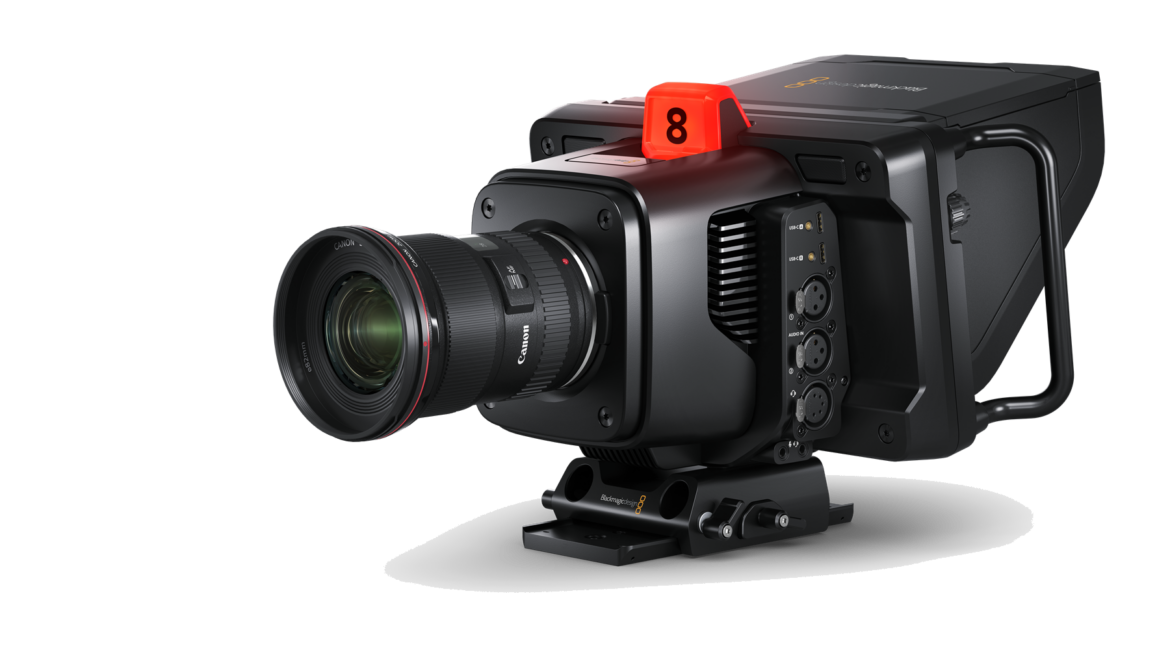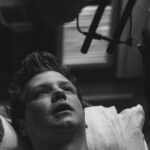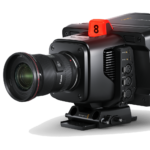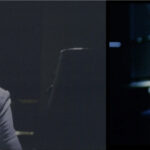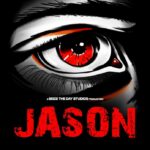Blackmagic Design today announced that more than 35 notable projects at the 2024 Sundance Film Festival were created using its digital film cameras, DaVinci Resolve Studio editing, grading, visual effects (VFX) and audio post production software, Blackmagic Cloud, and more.
Blackmagic Design congratulates the many distinguished feature films, documentaries and episodic series that were chosen as part of Sundance’s 2024 lineup, including “Good One,” “Stress Positions,” and “Union” which were shot in part with Blackmagic Design cameras. Additionally, projects such as “Love Me,” “A Real Pain,” “Suncoast,” and “Winner” relied on DaVinci Resolve Studio and Fusion Studio VFX and motion graphics software throughout post production, with documentaries such as “Frida” and “Union” also using Blackmagic Cloud.
According to “Stress Positions” DP Arlene Mueller, “We used the URSA Mini Pro 4.6K G2 as our B camera and second unit camera, which allowed the director, Theda Hammel, to get some shots outside of the production schedule, as well as capture some key angles as a second camera on set. It was a great addition to our package and allowed Theda the flexibility to capture extra moments both on set and off, which helped greatly in the edit.”
“DaVinci Resolve’s accessibility has allowed me to grow as a colorist over the last ten years to now using it as the base of our company, Elemental Post. It’s given me the confidence as a colorist to work on a VFX and color heavy film like ‘Love Me,’” said David Tomiak, colorist of “Love Me.” “Resolve’s build for a VFX pipeline was amazing and allowed us to be more creative in the color grade. From using mattes and alpha layers to color space transform and ACES workflow, it allowed us to create a strong pipeline while working with many different VFX vendors.”
Sundance 2024 Projects that Used Blackmagic Design Cameras and Gear During Production:
- “Better Angels: The Gospel According to Tammy Faye” DP Justin Kane used DaVinci Resolve Studio for dailies;
- “Daughters” DP Michael “Cambio” Fernandez used Blackmagic Pocket Cinema Camera 4K digital film camera for select scenes;
- “Dìdi (弟弟)” DIT Jordan Livingston used DaVinci Resolve Studio for dailies;
- “Exhibiting Forgiveness” DP Lachlan Milne used DaVinci Resolve Studio for LUT creation;
- “Good One” DP Wilson Cameron used Pocket Cinema Camera 4K for select scenes and DaVinci Resolve for grading dailies;
- “I Saw the TV Glow” DP Eric Yue used Blackmagic Pocket Cinema Camera 6K Pro digital film camera as a reference camera;
- “It’s What’s Inside” DIT Sean Rawls used DeckLink Studio 4K capture and playback card, Blackmagic Video Assist 7” 3G monitor/recorder, UltraStudio HD Mini capture and playback device, UltraStudio Recorder 3G and DaVinci Resolve Studio for production;
- “Luther: Never Too Much” DP Bryan Gentry used DaVinci Resolve for LUT creation, Micro Converter SDI to HDMI 3G for on set monitors, and UltraStudio Recorder 3G for remote viewing;
- “Out of My Mind” DP Noah Greenberg used DaVinci Resolve during camera testing, while DIT Yanick Champagne used Blackmagic Videohub 20×20 12G router, SmartView 4K monitor, UltraStudio 4K, UltraStudio Mini Monitor, and DaVinci Resolve;
- “Stress Positions” DP Arlene Muller used Blackmagic URSA Mini Pro 4.6K G2 digital film camera as the B camera; and
- “Union” DP Martin DiCicco used Blackmagic Pocket Cinema Camera 6K digital film camera for select scenes.
Sundance 2024 Projects that Used Blackmagic Design Gear for VFX and Editing:
- “A Different Man” Editor Taylor Levy used UltraStudio 4K as part of the editing workflow;
- “It’s What’s Inside” Online Editor Paul Cole used DaVinci Resolve Studio for online and conform;
- “Kidnapping Inc.” Editor Arthur Tarnowski, ACE, CCE used UltraStudio Recorder 3G as part of his editing workflow;
- “Little Death” VFX Artist Preston Mohr used DaVinci Resolve Studio as part of the VFX workflow;
- “Love Machina” Additional Editor Ben Mercer used DaVinci Resolve Studio for conforming and generating proxies;
- “Sue Bird: In the Clutch” Additional Editor Ben Mercer used DaVinci Resolve Studio for conforming and generating proxies;
- “Tendaberry” Post Producer Sam Gursky of Irving Harvey used DaVinci Resolve Studio for online editing;
- “War Game” Editor Jeff Gilbert and Assistant Editor George C. Hall used DaVinci Resolve Studio for transcoding and online editing; and
- “Winner” VFX Artist Chris Rogoski of Urban Prairie Post Production used Fusion Studio for compositing.
Sundance 2024 Projects that Used DaVinci Resolve and DaVinci Resolve Studio for Grading:
- “Agent of Happiness” graded by Máté Ternyik;
- “àma Gloria” by Marie Amachoukeli graded by Kévin Stragliati of Polyson Post Production;
- “As We Speak” graded by Ayumi Ashley of Rare Medium with the conform completed and project hosted at PostWorks New York;
- “Better Angels: The Gospel According to Tammy Faye” graded by Alastor Arnold of Keep Me Posted;
- “Between the Temples” graded by Jason Crump of Metropolis Post;
- “Brief History of a Family” graded by Edoardo Rebecchi, CSI of BEO Film Post Production – Copenhagen;
- “Conbody VS Everybody” graded by Allie Ames of PostWorks New York;
- “Dìdi (弟弟)” graded by Kaitlyn Battistelli of Ethos Studio;
- “A Different Man” graded by Nat Jencks of PostWorks New York;
- “Every Little Thing” graded by WildBear Entertainment’s Annica Mott;
- “Exhibiting Forgiveness” graded by Alex Bickel of Color Collective;
- “Frida” graded by Ernie Schaeffer using Blackmagic Cloud and DaVinci Remote Monitor app;
- “Gaucho Gaucho” graded by Marcy Robinson of Nice Shoes;
- “Good One” graded by Cédric von Niederhäusern using DaVinci Resolve Micro Panel;
- “I Saw the TV Glow” graded by Mikey Rossiter at PostWorks New York;
- “It’s What’s Inside” graded by Ryan McNeal of RKM Studios;
- “Kidnapping Inc.” graded by Hiếu Phùng of Bonjour Saigon with an Intensity Pro 4K capture and playback device;
- “Little Death” graded by Mikey Rossiter of Rare Medium;
- “Lolla: The Story of Lollapalooza” graded by Chad Mumford of Banana Post;
- “Love Lies Bleeding” graded by Vanessa Taylor of Goldcrest Post, with Colin Foulkes delivering the online edit;
- “Love Machina” graded by Jason Crump of Metropolis Post;
- “Love Me” graded by David Tomiak of Elemental Post using a DaVinci Resolve Mini Panel and UltraStudio 4K;
- “The Moogai” graded by Ferg Rotherham;
- “Out of My Mind” graded by Mike Howell of Color Collective;
- “The Rainbow Bridge” graded by Sam Gursky of Irving Harvey;
- “A Real Pain” graded by Marcy Robinson of Nice Shoes;
- “Stress Positions” graded by Marcy Robinson of Nice Shoes;
- “Sue Bird: In the Clutch” graded by Allie Ames of PostWorks New York;
- “Sugarcane” graded by Marcy Robinson of Nice Shoes;
- “Suncoast” graded by Alex Bickel of Color Collective; and
- “Union” graded by Natacha Ikoli at Nice Dissolve using DaVinci Resolve Mini Panel, DaVinci Resolve Micro Panel, DaVinci Resolve for iPad, DaVinci Remote Monitor app and Blackmagic Cloud.
Remote Post Workflow for Sundance’s Frida Supported by DaVinci Resolve Studio and Blackmagic Cloud
Fremont, CA, USA – Tuesday, January 23, 2024 – Part of the 2024 Sundance Film Festival’s U.S. Documentary Competition, the film “Frida” takes a look at the life and mind of iconic artist Frida Kahlo. Director Carla Gutiérrez brings the story to life through Kahlo’s own words from her diary, letters, essays, and interviews, as well as visually through her remarkable artwork.
As Image Workflow Supervisor, Color Team Director, and Senior Colorist on the film, Ernie Schaeffer used DaVinci Resolve Studio and Blackmagic Cloud as the central applications for most of the DI’s image processing. “The project was unique in the sense that the final archive was being updated throughout post production, right up until the last moments before QC and delivery for Sundance,” he noted. “We also had a dispersed team working remotely, so flexibility and collaboration were key and supported by DaVinci Resolve Studio and Blackmagic Cloud.”
The team began by synchronizing NAS devices across different locations in Mexico City and Morelos, Mexico, between the archive delivery/restoration, animation/VFX and color/online teams. Throughout post, the animation/VFX team updated and delivered approved shots within the NAS synchronization, and each location had certain read and write privileges to ensure each department was responsible for the specific deliveries required for the post process. The archive masters were delivered remotely through FTP from New Jersey to the server in Mexico City, which synchronized to all departments. Additional remote collaboration was required within the color/online team as Schaeffer was based in Morelos, with another colorist in Mexico City, and Gutiérrez in New York.
“The challenge was to continuously integrate the final archive masters into picture lock online, which was handled by the restoration team, and then delivered to the animation/VFX and color/online departments,” explained Schaeffer. “The conform and grade were done in DaVinci Resolve Studio using Blackmagic Cloud for the color/online team to work within the same project simultaneously. Blackmagic Cloud Storage was also used to move media files for color proposals and treatments, and during color sessions we live streamed our DaVinci Resolve viewer via the DaVinci Remote Monitor app to Carla in New York who was using an iPad Pro M2 with Reference Mode to ensure proper calibration of the image during the approval process. This was critical to the creative decisions made between Carla and the color team, and this workflow allowed color grading to begin from the start of the post process and continue through the delivery and restoration of archive masters.”
Schaeffer also used DaVinci Resolve Studio’s Fusion page for some cleaning and restoration aspects for the archive. “Fusion was used quite a lot for final dust busting, fixes and cleanups, and we didn’t even need to leave the timeline,” he said. “We used Resolve for the complete online, as well as for our mastering and delivery of mezzanine files and mastering for the creation of the DCP.”
Eventually, Gutiérrez, along with a small team, traveled to Mexico to finalize color, restoration and online in Schaeffer’s studio, but the team continued to rely on Blackmagic Cloud and the DaVinci Remote Monitor application as remaining archive masters, credits and animations continued to arrive until the last days of the post finishing schedule.
“I always adapt to remote possibilities so that the creative process is not limited by logistics or physical locations. On ‘Frida,’ the remote workflow, which was made possible by Blackmagic Cloud and Blackmagic Cloud Storage, created flexibility, and these remote monitoring and collaboration possibilities allow for a new paradigm for post production teams working from different countries and locations,” concluded Schaeffer.

